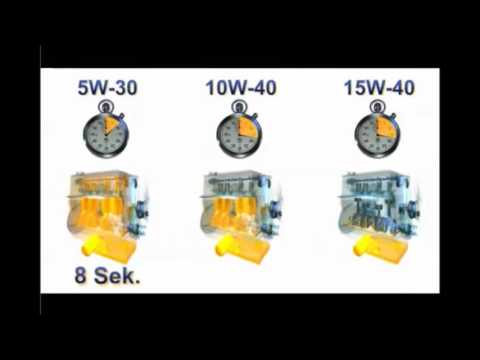
In the world of automobiles, it is important to know the different types of motor oils available and understand which is the most suitable for our vehicle. Two of the most common oils are 5W40 and 10W40. In this article, we'll explore the differences between these two types of oil, when to use each, and what their pros and cons are.
What does the number in the oil classification mean?
Before we get into the differences between 5W40 and 10W40, it's important to understand what the number means in the oil classification. These numbers represent the viscosity of the oil at different temperatures. The first number, followed by the letter W (which stands for winter), indicates the viscosity of the oil at low temperatures, while the second number represents the viscosity at high temperatures.
Differences between 5W40 and 10W40 oil
The main difference between 5W40 and 10W40 oil lies in its viscosity at low temperatures. 5W40 oil is thinner and flows more easily in cold temperatures, making it easier to start the engine in cold weather. On the other hand, 10W40 oil is slightly thicker at low temperatures, which can make starting difficult in extremely cold conditions.
Another important difference is the viscosity at high temperatures. 5W40 oil is thinner at high temperatures, which helps reduce friction and engine wear. On the other hand, 10W40 oil is slightly thicker at high temperatures, which may provide better protection in extreme heat.
When should each type of oil be used?
The choice between 5W40 and 10W40 oil depends on several factors, such as the climate, the type of engine and the recommendations of the vehicle manufacturer. In general, 5W40 oil is more suitable for cold climates, since it flows more easily at low temperatures and makes starting the engine easier. On the other hand, 10W40 oil may be better suited for warmer climates or older engines that require a higher viscosity at high temperatures.
It is important to consult your vehicle's owner's manual for specific manufacturer recommendations. There you will find information on the recommended type of oil and oil change intervals.
Advantages and disadvantages of each type of oil
5W40 oil
5W40 oil has several advantages. Its low viscosity at low temperatures facilitates engine starting in cold weather, reducing engine wear. In addition, its low viscosity at high temperatures helps reduce friction and improve engine efficiency. However, a possible disadvantage is that it can be more expensive than 10W40 oil due to its higher performance.
10W40 oil
10W40 oil also has its advantages. Its higher viscosity at high temperatures can provide better protection in extreme heat conditions. In addition, it is usually cheaper than 5W40 oil. However, its higher viscosity at low temperatures can make engine starting difficult in cold weather and increase initial wear.
Frequently Asked Questions (FAQs)
1. Can I use 5W40 oil instead of 10W40?
Yes, in most cases you can use 5W40 oil instead of 10W40. However, it is important to take into account the recommendations of the manufacturer of your vehicle. If your owner's manual specifies the use of 10W40 oil, it is best to follow those directions to ensure engine performance and durability.
2. What is the price difference between 5W40 and 10W40 oil?
The price of 5W40 and 10W40 oil may vary depending on the brand and the quality of the product. In general, 5W40 oil tends to be a bit more expensive than 10W40 oil due to its higher performance and additional benefits.
3. When should I change the oil in my vehicle?
The oil change interval may vary depending on the manufacturer and the type of oil used. In general, it is recommended to change the oil every 5,000 to 7,500 kilometers or every 6 months, whichever comes first. However, it is important to consult your vehicle's owner's manual for specific recommendations.
Conclusion
In summary, 5W40 and 10W40 motor oils have significant differences in their viscosity at low and high temperatures. 5W40 oil is thinner and flows more easily at low temperatures, while 10W40 oil is slightly thicker at both low and high temperatures. The choice between these two types of oil depends on the climate, the type of engine and the manufacturer's recommendations. It is important to follow the instructions in the owner's manual to ensure the performance and durability of the engine.
We hope this article has been helpful in clarifying the differences between 5W40 and 10W40 oil. If you have any additional questions, feel free to leave a comment below. We will be happy to help you!
Thanks for reading on Pistonudos.com!
Regards,
The Pistonudos.com team


























